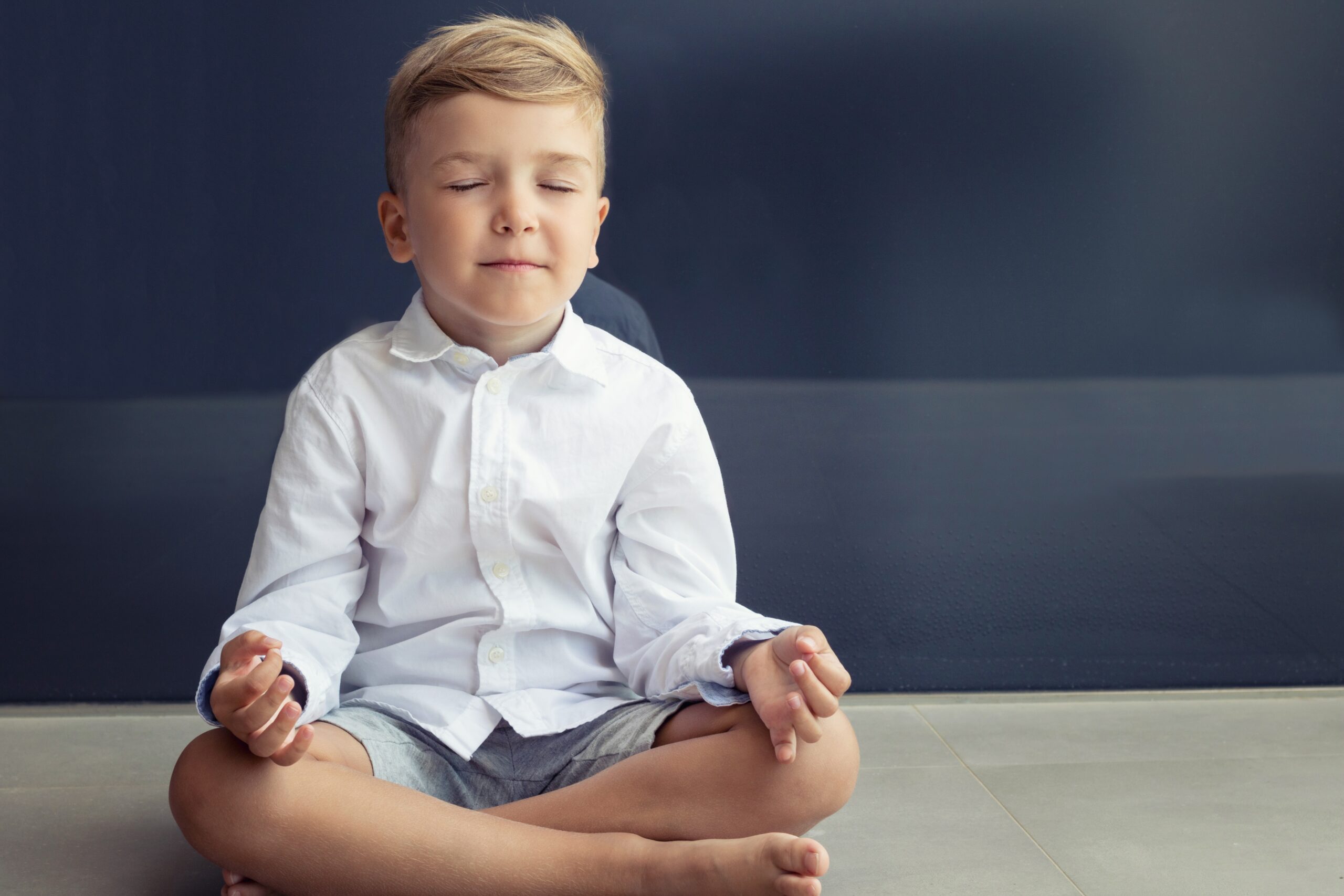The holidays are usually credited with being the most stressful time of the year yet, beyond the holidays, there other times of the year (like all ofthetime) when we can use calming strategies to help ease the stress our youngest feel due to schedules, events, or the regular day-to-day hustle and bustle of life.
Researchers in child development discuss periods of equilibrium and disequilibrium. In periods of equilibrium, our children’s days run smoothly with few meltdowns. Then it seems—overnight—everything changes. A simple request can turn into a full-blown crying jag—with screaming, name-calling, hitting, throwing—and with enough frustration for everyone involved.
When this happens, our children are entering—or are in–a period of disequilibrium. Their bodies’ vestibular and proprioceptive systems are developing and their brains are working overtime to take in all of the new physical and cognitivelearning takingplace. Typically, we see periods of disequilibrium right before a developmental milestone such as walking or talking. Beyond thedisequilibrium inducedmeltdowns, there are also meltdowns induced by the “Double I.”
As a former parent educator, I worked with the parents of children “ages 0-5” and received many requests for “calming strategies,” as well as the age-old question “what can I do topreventa meltdown?” Most of these requests came during what I termed the “Double I” (IncreasedIntensity) times of the year. These are the times when our children and students pick up on adults’ increased stress and take this stress on themselves.“Double I”times include the holidays, the beginning of a new school year, vacations, new siblings, moving, loss of a loved one or pet, violence in the news, play-dates, birthday parties—so essentially, calming strategies can be used year ‘round. Add “growing up” to the mix and, well…
So what todo?
Each of thestrategies,listed below, helps our childrenand studentsreduce stress, provides a feeling of control, and helps to calm the youngest ones in our care:
1. PlanForPlay inYourDay!
Play is how children learn. Research tells us that unstructed, imaginative play is mostbeneficial.
Let children know the plan for the day,week, or longer.One suggestion is to put a calendar or schedule someplace where everyone can see it. For children who don’t yet read,cut out or draw simple pictures so theyhave a visual reminder of the day’s plan.Many children wantto know “what comes next?” Aschedulehelps them prepare for what lies ahead.Keep it simple.For example, asimple drawing of a snowman showsthe plan is to go outside and play!
2. Connect Withthe Kiddos!
- “Convince Me!”Ourstudents’and children’s minds are fullof great ideas and imagination!In BarbaraColoroso’sbookKids Are Worth It!sheencourages parents to have their children “convince you why they can.” In other words, rather than parents working hard to explainwhy they can’t do something, ask your children to convince you why they can.
- For example, imagine your kidswant to go outside and play. You have a lot going on so you start to tell them why they can’t. Instead, say to your children “convince me.” Theyare then taught to “make their argument” as to why they should be able to do something—in this case, togo outside and play. They might say something like “because I picked up my room, I’ve eaten lunch and I’ll stay where you can see me.” It’s a win-win. We adults save our energy, and our children are taught to get the things they need to get done (i.e. be responsible) and how to advocate for themselves.
- This works in the classroom, too! Imagine, a room full of students working to get the tasks they need to achieve completed then coming to you andsaying“I’d like to read for fun. I’ve completed my math assignment, and I’m all caught up with my other work.”Ahh…letthemdo the convincing!Doesn’tthat sound convincing?!
- Invite Input.Encourage your students/kids to share their ideas, andto ask questions about the plan for day. We all feel better when we have a say in our day.
- Set Expectations.Rememberto communicateyour(reasonable) expectations to your students/children.When we know what is expected of us, werise to theoccasion.
- Warning: Transition Ahead!Warnings before transitionslet children prepare for a change. Imagine you’re watching your favorite TV show, or doing your favorite activity when somebody walks into the room and says “turn it off, we’re leaving!” Would you be frustrated? (yes!) Instead, try giving your students and children a 15 and 5 minute warning so they can prepare for the change.Other ideas: set a timer,sing asong,turnon music to indicate we are leaving or something is changing soon!
- Provide reassurance.Reassuring anyone, but particularly our children or students can be very helpful. Who doesn’t like to know “I’ll be there!”?Other phrases like“I’ll be with you the whole time!” or “I’ll be back to get you!” are also useful and reassuring. Another idea: encourage your child to bring a “lovie” (blanket, teddy bear, something of yours they can put in their pocket, a family photo, etc.) that they can hold, touch, or glance at when they need reassurance.
3.Routines Really Rule!
We spend a lot of time looking forward to disruptions in our routines—yet,when we disruptourroutines, we are affected. To help keep kids calm when we break fromroutine—do your best tokeep the basics in place: bedtimes, meals, exercise,and drink plenty of water.Routineshelp kids feel a sense ofcontrol and security, and leaves them feelingrested,nourished, energized, and quenched.
4. Enlist theHelp of theList!
So, maybe you’re thinking that’s all good informationto have, butIstillneed some fast and easystrategies to help keepkids calm.
Check outthis list of ideas: (keep the list somewhere so kids can see it and can chooseactivities).
And lastly…
5.Solving Meltdown Mysteries
If you find yourself managing meltdowns, look backwards.Ask yourself…
- What came before the meltdown?
- Did they get enough rest?
- Was their bedtime changed, or did they miss their nap?
- Have they had any exercise, fresh air,timein nature?
- What foods have they been eating?
- What did they do yesterday?
- Are they thirsty?
- Are they anxious about going to a friend’s house or excited about an upcoming event?
- Is mom or dad out of town?
- Are they missing school or friends?
- Have they recently lost a pet?
- Is there an illness in the family?
Pay attention to what camebefore the meltdown. Often, our children are tired, over-stimulated, hungry, thirsty, or there’s been a change in routine.Children often re-gress, before they pro-gress.So, look backwards.
Remember, our children and students are watching us.Do your best tomanage stress in healthy ways.
Happy New Year!
Resources:
- Coloroso, B.(2010).Kids are worth it: Raising resilient, responsible, compassionate kids.New York, NY. HarperCollins.
- McCarthy, G.(2013).A moving child is a learning child: How the body teaches the brain to think.Golden Valley, MN.Free Spirit Publishing.
***
Learners Edge is passionately committed to providing you with continuing education coursework, materials, and tools that will help you succeed in your classroom and in your career.
Offering more than 100 print-based or online courses for teachers, you can earn the graduate credit you need for salary advancement and meet your professional development needs. Contact us today to get started!







